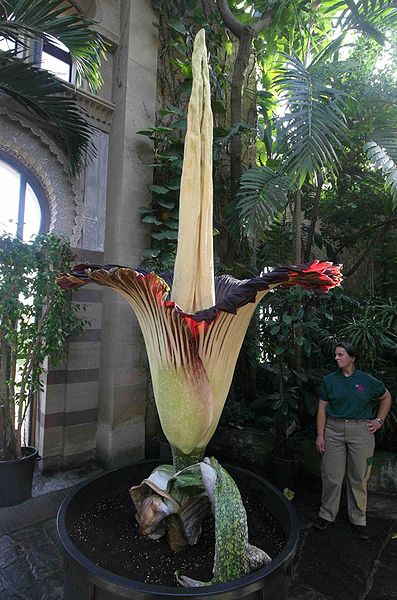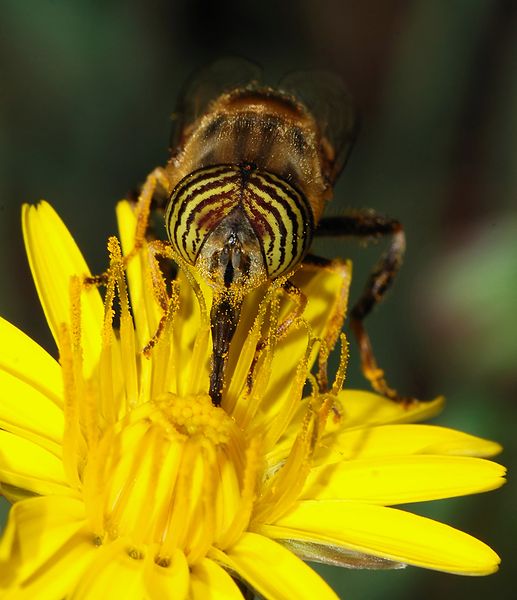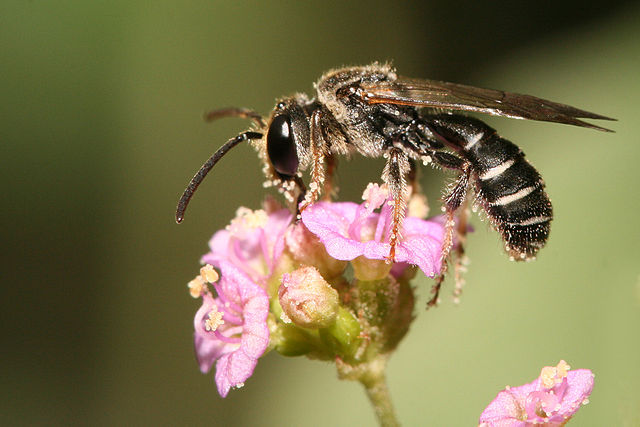Carrion flowers, also known as corpse flowers or stinking flowers, are mimetic flowers that emit an odor that smells like rotting flesh. Apart from the scent, carrion flowers often display additional characteristics that contribute to the mimesis of a decaying corpse. These include their specific coloration, the presence of setae and orifice-like flower architecture. Carrion flowers attract mostly scavenging flies and beetles as pollinators. Some species may trap the insects temporarily to ensure the gathering and transfer of pollen.
Amorphophallus titanum in Wilhelma Botanical and Zoological Gardens, Stuttgart
Flower of Rafflesia kerrii, in Khao Sok National Park, Southern Thailand.
House fly landing on a flower of Orbea variegata.
A pollinator is an animal that moves pollen from the male anther of a flower to the female stigma of a flower. This helps to bring about fertilization of the ovules in the flower by the male gametes from the pollen grains.
A syrphid fly (Eristalinus taeniops) pollinating a common hawkweed
Lipotriches sp. bee pollinating flowers
Honey bee pollinating a plum tree. Bees are the most effective insect pollinators.
An Australian painted lady feeding on nectar







